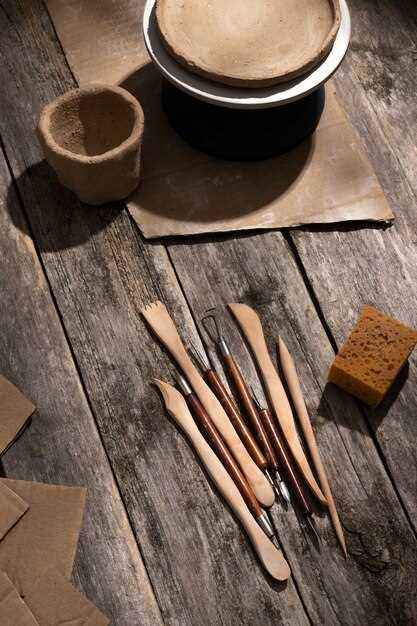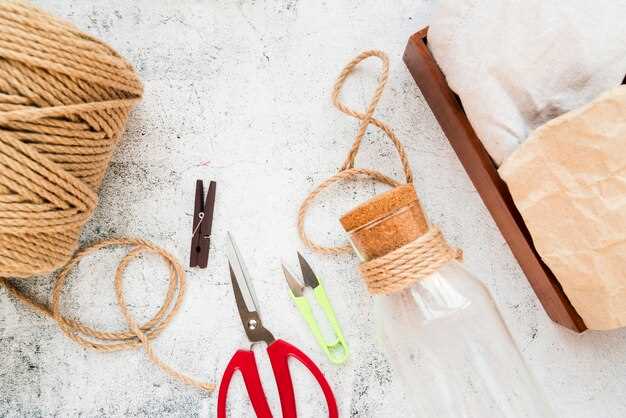Transform old wood into stunning home decor that tells a story. Begin with wooden pallets, which can be easily repurposed into rustic coffee tables or planters. A simple coat of stain can enhance their natural beauty while adding a personalized touch to your living space.
Consider creating wall art from reclaimed wood pieces. Assemble them into geometric shapes or monograms for a contemporary look. Use different shades and textures to add depth, making a unique focal point for any room.
For outdoor enthusiasts, craft birdhouses or feeding stations. Not only do they provide a safe haven for local wildlife, but they also beautify gardens or yards. Use non-toxic finishes to ensure the safety of your feathered friends while maintaining your environmental commitment.
Functional items can also emerge from recycled wood. Build organizers for your workspace or kitchen using cut pieces. Shelving units made from upcycled wood add practicality without sacrificing style. Each project highlights sustainability while allowing you to express your creativity.
Lastly, embrace the challenge of making furniture from scrap wood. Chairs or stools crafted from various wood types can become conversation starters. Such projects showcase creativity in design and a dedication to sustainability.
Innovative Uses for Reclaimed Timber in Home Decor

Transform reclaimed timber into stunning accent walls. Use planks to create a rustic focal point in any room. Stain the wood to enhance its natural beauty or paint it to match your color scheme. Each plank tells a story, adding character to your space.
Craft furniture pieces such as coffee tables, benches, or shelves. Wooden crates can be upcycled into stylish storage options while retaining their rustic charm. Sand down rough edges to ensure safety and comfort without sacrificing the wood’s unique imperfections.
Create bespoke picture frames from reclaimed boards. This approach gives your photos a distinct touch, perfect for a gallery wall. Use varied widths and orientations to enhance visual interest and highlight different photo sizes.
Design unique lighting fixtures by incorporating reclaimed wood with pendant lights or table lamps. Construct wooden bases or frames to elevate your existing light sources, combining sustainability with aesthetics.
Build functional pieces like coat racks or key holders using leftover timber. A simple plank mounted on the wall can serve as an eye-catching entryway solution, adding both style and practicality to daily routines.
Install reclaimed timber mantels above fireplaces for a warm, inviting look. This project enhances the aesthetic appeal of any living space and serves as a perfect platform for decorations.
Fashion wall art by arranging small pieces of reclaimed wood into geometric shapes or patterns. Hang these creations for an organic, textured statement piece that sparks conversation.
Consider using reclaimed wood for window frames or sills. This not only supports sustainability but also preserves the character of older homes, emphasizing their unique architectural details.
How to Create Eco-Friendly Insulation from Recycled Wood

Create eco-friendly insulation using recycled wood by following these straightforward steps. Begin with sourcing wood scraps from construction sites, furniture makers, or even pallets. Make sure the wood is untreated and free from chemicals. Cut the wood into small pieces or shavings, allowing for better insulation properties.
Processing the Wood
Shred the wood into finer particles using a wood chipper or a similar tool. This increases surface area and enhances insulation capabilities. After shredding, dry the material thoroughly to remove any moisture, which can decrease effectiveness. A dehydrator or drying shed works well for this purpose.
Binding the Insulation
To bind the wood particles, combine them with an eco-friendly adhesive like natural latex or a starch-based binder. This not only keeps the insulation together but also reduces environmental impact. Mix the adhesive with the wood particles until they are evenly coated. Press the mixture into molds to form insulation boards or batts.
| Step | Action |
|---|---|
| 1 | Source untreated wood scraps |
| 2 | Shred wood into small pieces |
| 3 | Dry the shredded wood thoroughly |
| 4 | Mix with eco-friendly adhesive |
| 5 | Press mixture into molds |
Once the insulation boards are formed, allow them to cure for a few days. After the curing period, your eco-friendly insulation is ready for installation in walls, attics, or other areas where insulation is needed. This approach not only reduces waste but also contributes to a sustainable building practice, making your home more energy-efficient.
Step-by-Step Guide to Building with Recycled Wood in Australian Construction

Gather high-quality recycled wood from trusted sources like demolition yards or reclaimed wood suppliers. Make sure the wood is clean, free of pests, and structurally sound.
Inspect each piece thoroughly. Look for signs of rot, warping, or damage. Remove any nails or fasteners that could impede your construction process.
Measure and cut your wood to the desired lengths using a circular saw or miter saw. Always wear safety goggles and a dust mask to protect yourself during this process.
If refinishing is needed, sand the surfaces with a random orbital sander to eliminate rough spots and splinters. Opt for eco-friendly stains or sealers to maintain sustainability.
Prepare your workspace by laying down a tarp or drop cloth. Organize your tools for easy access. Ensure proper ventilation if working indoors, especially when applying finishes.
Start assembling your project using wood glue and wood screws. Pre-drill holes to prevent splitting. Use clamps to hold pieces securely together while the glue dries.
Incorporate additional features like shelves or storage compartments by adding side panels or backboards. Check stability regularly during assembly to ensure a sturdy final product.
Finish by applying a protective coat suitable for your project’s intended use, whether indoors or outdoors. Regular maintenance will extend the lifespan of your recycled wood construction.
Share your success by documenting the process. This inspires others to consider recycled wood in their projects while fostering a community around sustainable crafting.
Tips for Sourcing Quality Reclaimed Wood Materials
Check local salvage yards and architectural salvage companies first. They often have a wide selection of reclaimed wood, and staff can provide insights on sourcing history and conditions. Visit these places regularly to find newly added materials.
Network with contractors who specialize in renovations. They frequently encounter reclaimed wood during projects and may have extra materials for sale or know where to look. Building relationships can lead to valuable finds.
Online Marketplaces
Explore online platforms like Craigslist, Facebook Marketplace, and Etsy for reclaimed wood. Look specifically for local sellers to minimize shipping costs and support nearby artisans. Pay attention to seller reviews and pictures to assess quality before purchases.
Community Workshops and Events
Participate in community workshops or events focused on sustainable building and crafting. These gatherings can connect you with individuals who have experience sourcing reclaimed wood and provide opportunities to buy or trade materials.
Inspect wood carefully. Look for signs of pests, mold, or warping prior to purchase. If possible, ask for documentation of the wood’s origin to ensure it meets your quality and ethical standards.
Incorporating Natural Insulation Techniques in Wooden Projects
Use sheeps wool for insulation. Its natural fiber provides excellent thermal regulation and moisture control. Fit it snugly between wooden beams to keep spaces warm in winter and cool in summer.
Consider straw bales as an eco-friendly insulation option. They offer a high R-value and can be integrated into walls. Create a rustic aesthetic while enhancing energy efficiency.
Explore the benefits of hemp insulation. Its sustainability and resistance to pests make it an ideal alternative. Install hemp batts within wooden frames, ensuring proper ventilation to avoid moisture issues.
Recycled cotton, or denim insulation, is another creative option. This material not only reduces waste but also provides good sound and thermal insulation. Use it in wall cavities for added comfort.
- Keep moisture control in mind. Integrate vapor barriers to prevent dampness.
- Seal gaps and cracks. Use eco-friendly caulk or natural sealants for airtightness.
- Ventilation is key. Ensure proper airflow to maintain indoor air quality.
Incorporate these natural insulation techniques to enhance your wooden projects. Each material offers its unique benefits, contributing to a sustainable and cozy environment.
Creative Furniture Ideas Using Recycled Wood and Eco Materials
Build a rustic coffee table using reclaimed barn wood. Choose pieces with character, such as weathered planks or beams, to create an eye-catching centerpiece. Use metal hairpin legs for a modern twist, or incorporate wheels for easy mobility.
Transform old wooden pallets into a stylish outdoor seating arrangement. Stack and secure the pallets to form benches, then add colorful cushions filled with eco-friendly materials. Treat the wood with natural oil to enhance durability against the elements.
Upcycled Bookshelf Designs
Create a unique bookshelf by utilizing reclaimed wood boards. Arrange them in an asymmetrical pattern on the wall for a trendy floating shelf look. This not only saves space but also provides a stunning display for books and decor. Combine with eco-friendly brackets for support.
Custom Dining Table
Craft a dining table from salvaged wood. Mix different types of timber for visual interest, incorporating natural shapes and imperfections. Finish with a non-toxic varnish to highlight the wood’s beauty. Pair it with chairs made from recycled materials to complete the eco-friendly dining set.
Transforming Wooden Pallets into Functional Items for Your Home
Convert wooden pallets into a stylish coffee table by sanding the surface, applying a wood finish, and attaching wheels for mobility. This not only adds character but also functionality to your living space.
Construct a vertical garden by disassembling a pallet. Attach the slats to a wall or fence, fill the gaps with soil, and plant herbs or flowers. This approach saves space while enhancing your outdoor aesthetics.
Create a rustic shelving unit using pallets. Stack several layers, secure them with brackets, and add personal touches like paint or decorations. You’ll enjoy a unique storage solution that showcases your favorite items.
Design a comfortable outdoor seating area by repurposing pallets into benches. Sand the wood to prevent splinters, add cushions, and place the benches around a fire pit. It’s a cozy spot for gatherings with friends and family.
Transform a pallet into a pet bed by cutting it to a suitable size for your furry friend. Paint it to match your home decor, and add a soft cushion for comfort. This DIY project ensures your pet has a stylish and cozy space.
Repurpose pallets into a wine rack by securing slats at various angles to hold bottles. Customize the design to fit your storage needs. This adds a rustic charm to your dining or kitchen area.
Construct a personalized bike rack by modifying a pallet. Cut out sections to securely hold bikes while adding hooks for helmets and accessories. This not only organizes your space but also creates easy access for your cycling adventures.
Crafting items from pallets allows for creativity and sustainability, making your home both functional and unique. Embrace the charm of recycled wood to enhance your living environment.
Understanding the Benefits of Eco-Friendly Insulation in Building Projects
Choosing eco-friendly insulation brings significant long-term advantages for any building project. This option helps reduce energy consumption while promoting sustainability.
- Energy Efficiency: Eco-friendly insulation materials offer outstanding thermal performance. They maintain indoor temperatures, reducing the need for heating and cooling systems, which lowers energy bills.
- Health Benefits: Many traditional insulation products contain harmful chemicals and irritants. Eco-friendly options, like cellulose or sheep’s wool, are typically non-toxic and improve indoor air quality.
- Sustainability: Materials such as recycled denim or agricultural byproducts utilize resources that would otherwise contribute to waste. This approach conserves natural resources and minimizes environmental impact.
- Moisture Control: Certain eco-friendly insulations excel at managing moisture. For instance, hemp insulation effectively regulates humidity, preventing mold growth and promoting a healthier environment.
- Soundproofing: Many eco-friendly materials provide excellent soundproofing qualities. This benefit enhances comfort, particularly in multi-family buildings or homes located in noisy areas.
- Longevity: Natural insulation materials can have a longer lifespan compared to conventional options. This durability means reduced maintenance and replacement over time.
Integrating eco-friendly insulation not only contributes positively to the environment but also enhances the comfort and efficiency of living spaces. By prioritizing sustainable materials, building projects reflect a commitment to responsible practices and improved quality of life.
Cost-Effective Methods for Treating Recycled Wood for Longer Life
Apply a mixture of linseed oil and beeswax to enhance the durability of recycled wood. This natural blend provides a protective layer that repels moisture and resists decay. Use equal parts of linseed oil and melted beeswax, and apply it with a soft cloth, ensuring even coverage.
Consider using vinegar and baking soda as a gentle cleaning solution before treatment. This method removes dirt and possible mold, promoting better absorption of protective treatments. Mix a tablespoon of baking soda with a cup of vinegar and water, scrub the wood, and let it dry completely.
Stain with eco-friendly wood preservatives that contain natural ingredients. Look for products that are low in volatile organic compounds (VOCs), making them safer for indoor use and more environmentally friendly. Follow the manufacturer’s instructions for the best results.
Seal wooden pieces with a homemade polyurethane alternative using water-based polyurethane mixed with natural oils. This combination not only protects but also enhances the natural beauty of recycled wood. Apply thin layers and allow adequate drying time between coats.
For outdoor projects, treat the wood with a solution of boiled linseed oil and turpentine for additional weather resistance. Mix three parts linseed oil with one part turpentine, apply generously, and wipe off excess to prevent tackiness.
Regular maintenance extends the life of recycled wood. Periodically check for wear and reapply treatments as needed. Keeping the wood clean and reconditioning it every few years can help maintain integrity and appearance.
Exploring Local Regulations for Recycled Wood in Construction in Australia
Check your local government regulations regarding the use of recycled wood for construction. Each state and territory in Australia has its own guidelines, which can vary widely. For instance, New South Wales mandates that recycled timber must be treated according to the Australian Standards AS 4970-2009 if used in structural applications.
Understand the definitions applied to recycled wood. Some jurisdictions classify recycled wood based on its previous usage, meaning that certain types may face stricter controls. Familiarize yourself with terms like “reclaimed wood” and “recycled timber,” as these can imply differences in treatment requirements and safety standards.
Consult your local planning authority for any restrictions on sourcing recycled materials. Some areas may have specific zones where recycled wood utilization is encouraged or limited. Always ensure your supplier complies with the local sustainability policies.
Regularly check for any updates or amendments to building codes that might affect your project. Compliance with the National Construction Code (NCC) is necessary, so make sure that all recycled wood materials meet these requirements.
Consider contacting industry associations such as the Australian Timber Association or the Forest and Wood Products Australia. They provide resources and advice on compliance with local regulations for recycled materials and can connect you with suppliers who follow best practices.
Keep documentation of the origin and treatment of recycled wood. This ensures transparency and accountability in your construction projects and simplifies the process during inspections or audits.
Video:
A Second Life for Pallets: Turning Discarded Wood into a Gorgeous Coffee Table
A Second Life for Pallets: Turning Discarded Wood into a Gorgeous Coffee Table by Woodworking Guide 3,887,139 views 1 year ago 34 minutes
Q&A:
What are some popular projects I can create with recycled wood?
There are numerous exciting projects you can create with recycled wood. Some popular ideas include handmade furniture like tables and chairs, decorative wall art or signs, plant holders and garden boxes, birdhouses, and wooden toys for children. These projects not only help reduce waste but also allow you to showcase your creativity and personal style.
How can I prepare recycled wood for crafting?
Preparing recycled wood involves several steps. First, you should clean the wood thoroughly to remove any dirt or old paint. Sanding is important to smooth out rough edges and surfaces, ensuring a pleasant finish. If necessary, you might want to treat the wood with a wood preservative or sealant to protect it from wear and tear. Lastly, make sure to check for any nails or screws and remove them before starting your crafting project.
What tools do I need for woodworking projects with recycled wood?
Basic woodworking projects can be accomplished with a range of common tools. Essential tools include a saw (hand saw or power saw), a hammer, nails, or screws for assembly, a drill for making holes, and sandpaper for smoothening edges. Depending on the complexity of your creations, you might also find clamps, a square for ensuring right angles, and a measuring tape to be very useful in your crafting work.
Are there any safety tips I should follow while working with recycled wood?
Safety is paramount when working with any type of wood. Always wear safety goggles to protect your eyes from dust and debris. Use a mask to avoid inhaling any fine particles, especially if you are sanding or cutting. Be cautious with sharp tools; ensure they are handled properly and stored safely when not in use. It’s also wise to work in a well-ventilated area to minimize exposure to any harmful fumes if you use paint or wood treatments.
Can I sell items made from recycled wood, and do I need permits?
Yes, you can sell items crafted from recycled wood. However, local laws and regulations vary, so it’s important to check if you need any permits or licenses for selling handmade goods in your area. Also, consider labeling your products to indicate that they are made from recycled materials, as this could appeal to environmentally conscious consumers and enhance your product’s value in the marketplace.
